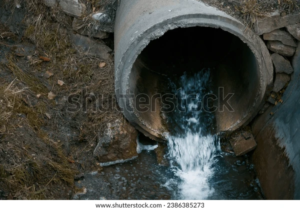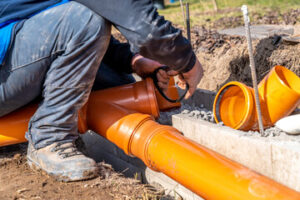Electrician Jacksonville NC are skilled professionals specializing in installing, repairing, and maintaining electrical wiring and equipment. They work in various settings, from residential homes to commercial buildings and industrial sites.
The first step in becoming an electrician is completing a vocational or trade school program. This usually takes 4-5 years after high school, and it will prepare you for an apprenticeship under a master electrician.

Almost every home, office, building, and factory requires power systems. Electricians specialize in installing, repairing, and maintaining electrical power, communications, lighting, and control systems. Their work includes the new design and installation of wires, cables, switches, and fixtures to supply electricity for light, heat, signaling, communication, and alarm transmission.
During the installation process, an Electrician turns plans into functional electrical systems by following step-by-step procedures and ensuring compliance with standards. For example, they may lay out the wiring, set up distribution panels, install and connect lighting fixtures, and run wires through conduits, ducts, or walls. They may also be responsible for connecting specialized systems like data and communication networks or fire alarms.
When working on a construction site, Electricians typically collaborate with engineers and architects to provide input for electrical system designs and ensure that installations meet specifications. They also take precautions to prevent dangerous situations, such as electrical shocks or fires, by implementing safety protocols and using equipment like voltage detectors and gauges to test circuits for potential hazards.
An important aspect of electrical installation is determining the right layout for an efficient system. An electrician will consider factors like furniture placement, the number and type of appliances and fixtures in a space, and the overall flow of the house when deciding where to place electrical outlets and light switches. They may also make recommendations, like whole-home surge protection or wiring upgrades for smart home technology.
As part of the installation process, Electricians must follow local and national electrical codes and safety regulations to protect themselves and their clients from hazardous conditions. This involves implementing grounding systems, installing protective devices like circuit breakers and surge protectors, and ensuring that all wiring practices are up to code.
Throughout the installation process, an Electrician must have keen attention to detail, critical thinking skills, and physical stamina. They must be able to read blueprints and technical drawings, as well as understand complex electrical schematics. They must also be comfortable with using tools and equipment, including drills, extension cords, and power tools. They must also be able to identify and troubleshoot problems in electrical wiring, such as short circuits or overloaded outlets.
Repair
An electrician focuses on the repair, maintenance, and troubleshooting of electrical systems. This includes working with wiring, circuits, outlets, switches, and lighting fixtures. It also involves testing and verifying the repair work for accuracy and safety. The scope of the job may vary depending on the type of system or environment in which the electrician works.
Safety must always be a priority for an electrician, even when performing routine repairs at home. It’s essential to shut off the power supply before starting work to prevent accidents and injuries. This protects against fires and electrical problems caused by overheating or faulty wiring. It’s also important to wear protective gear like gloves and goggles to prevent electrical shocks. Lastly, it’s important to use tools specifically designed for electric repair jobs to reduce the risk of electrocution.
Identifying the Problem
To ensure safety during electrical repairs, an electrician must first recognize the problem. This can be done by inspecting the circuits or checking the electrical panel for signs of overheating or faulty wiring. Once the issue has been identified, it can be addressed accordingly.
Depending on the scope of the job, an electrician may need to replace wiring or switch boxes. This can include replacing faulty wires, reconnecting tripped circuit breakers, or upgrading outdated service panels. Another common electrical repair involves installing ground fault circuit interrupters (GFCIs) in areas with moisture, such as bathrooms and kitchens. GFCIs help reduce the chances of electric shock and prevent damage to sensitive appliances during a power surge.
Before beginning an electrical repair, an electrician must understand how to read and interpret the breaker panel. This includes knowing the different color codes for various types of current, as well as the carrying capacity of each wire. They must also be able to differentiate volts, amperes, ohms, and watts, which are all important components of electrical circuits. Lastly, an electrician should also know how to properly insulate wires and use proper tools when handling them. These precautions help ensure the safety of both the electrician and their customers. For complex repair projects, it’s best to contact a professional electrician who can handle them safely.
Maintenance
Electrical maintenance is routine inspection, testing and repair of equipment that supplies power in residential, commercial and industrial buildings. Maintenance is the preventative approach to protecting against damage or failure of systems and equipment that could result in costly downtime and potential fires. During this process, electricians check that wiring, outlets and other components are in good condition by assessing their appearance, performance and functionality.
For residential properties, this may include inspecting light switches, replacing blown bulbs, upgrading electrical outlets and checking circuit breakers to ensure safe wiring for home appliances. It may also involve installing surge protection devices to help protect electronic equipment from sudden voltage spikes that can damage or even destroy them.
In a business or commercial environment, the electrical maintenance process typically involves more extensive and complicated work. This may include assessing the electrical load of a property to determine if it can support additional fixtures or upgrades, such as an expansion or renovation. It may also include testing and repairing emergency generators to ensure they are ready to operate when needed. It also includes performing regular cleaning and dusting to keep equipment running smoothly, preventing overheating or electrical malfunctions that can lead to safety hazards.
Circuit breakers are vital safety devices that prevent overloads, short circuits and electrical fires by interrupting the flow of electricity when there is an issue. However, these can become damaged or fail over time due to age and other factors, such as rodents chewing through wires. An experienced electrician can assess the condition of these important safety devices and replace them as necessary to avoid the risk of fires or injuries from shock.
It is important to note that electrical maintenance should always be performed by a professional electrician, as they have the knowledge and expertise required to perform these tasks safely and correctly. In addition, they understand the electrical codes and local regulations that govern the maintenance of electrical systems and equipment. They can advise on appropriate maintenance schedules and other related matters, such as the best type of equipment to use for specific electrical tasks.
Testing
Over time and with regular use, electrical installations can deteriorate and become unsafe. This is why it’s important to have periodic inspections and tests conducted, known as EICRs (Electrical Installation Condition Reports). An EICR will identify signs of damage or deterioration that can be missed by the untrained eye. This will also highlight any potential hazards that may exist, such as insulation resistance issues or faults with portable appliances.
As a homeowner, it’s imperative to be aware of the risks and have your electrical system regularly tested by a qualified electrician. It’s recommended to have this done every six to 12 months, especially if your property is heavily used or has lots of electrical appliances. This will ensure that any problems are caught early and can be resolved before they lead to a fire or injury.
Before a testing session, it’s a good idea to clear any obstructions that could interfere with the work and remove any items that aren’t in daily use. This will help the process run smoothly and allow the electrician to focus on the areas that need it most. It’s also a good idea to make a list of any specific issues you have, such as flickering lights or tripping circuit breakers, so the electrician can address these accordingly.
During the test, the electrician will inspect the consumer unit (which distributes electricity to various circuits in your home), along with outlets and switches. Then, they will test each one to determine whether it’s working properly and safely. They will use a multi-meter, which is an instrument that measures voltage, current, and resistance in electronic equipment and household appliances.
To be a licensed Electrician, you’ll need to pass an aptitude test and complete an apprenticeship program. You’ll also need to have good eyesight and hand-eye coordination, as well as logical problem-solving skills. During the apprenticeship, you’ll learn to read blueprints and work orders and understand electrical standards. You’ll also need to be comfortable operating electrical equipment and following safety protocols.




